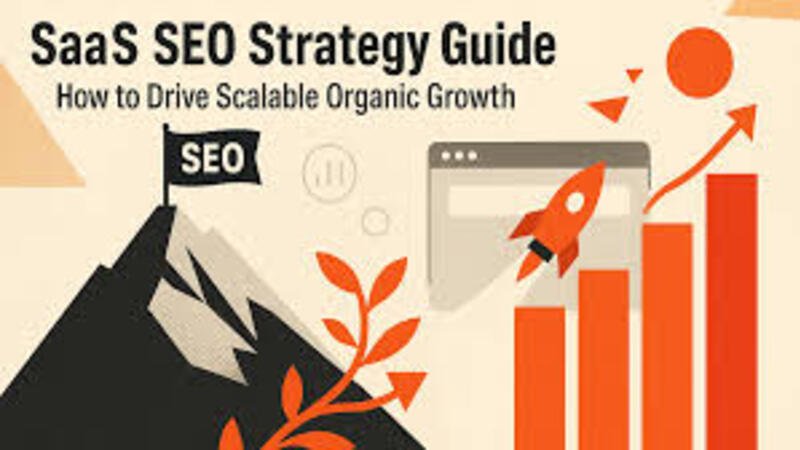The Modern SaaS SEO Landscape
The SaaS SEO Strategies That Drive Real Growth industry presents unique opportunities and challenges for search engine optimization. As search engine algorithms evolve, success in the SaaS SEO space goes far beyond keyword stuffing and backlink quantity. Algorithm updates from Google and Bing emphasize user intent, semantic understanding, and the overall site experience. In practice, SaaS brands must focus on delivering value at every stage of the user journey.
Given the highly competitive nature of SaaS niches, it’s critical to blend foundational SEO techniques with advanced, user-focused optimizations. SaaS companies striving for growth often find that working with a SaaS SEO agency can provide much-needed expertise with strategy and execution, ensuring that technical excellence and innovative approaches are implemented cohesively.
In today’s market, the winners are those who swiftly adapt to algorithm changes, keep pace with emerging SEO technology, and constantly strive to build authority and trust within their target verticals. Combined with a user-centric mindset, these efforts form the starting point for effective SaaS SEO strategies.
Adaptation remains crucial as frequent innovations, new product launches, rapid iterations, and high customer expectations mark the SaaS landscape. SEO is a continuous process, requiring regular reassessment and alignment with marketing and sales teams to ensure messaging, content, and optimization remain relevant and impactful.
Essential Technical SEO Practices for SaaS
The bedrock of SaaS SEO lies in flawless technical implementation. A well-structured website ensures search engines can efficiently crawl. Index, and serve your content to the right audience. Begin with an organized site architecture: logical URL structures, sitemaps, and prudent management of internal links make it easy for search engines and users to navigate.
Site speed and mobile responsiveness are non-negotiable; with Google’s mobile-first indexing, sluggish load times or poor user experiences on smartphones will hinder rankings and conversions. Through HTTPS implementation, security protects both users and your brand’s credibility. Incorporating schema markup helps search engines better understand your content, improving rich snippet eligibility and click-through rates.
Content That Connects: Meeting User Intent
Effective SaaS SEO content must be mapped across the entire funnel: from awareness (blog posts, educational resources) to consideration (case studies, product comparisons) to decision (feature pages, demo requests). Each stage requires understanding the searcher’s intent and delivering relevant, actionable information.Integrating semantic keywords and long-tail phrases is vital for capturing nuanced queries and driving qualified organic traffic. Google’s understanding of language and context has evolved.
Overcoming SaaS SEO Challenges
High-competition keywords—think “project management software” or “CRM tool”—make top rankings a daunting prospect. SaaS companies should target niche topics within their domain to compete while delivering unparalleled depth and expertise. Regular product updates require agile content management to ensure marketing collateral, technical documentation, and support resources are always current and aligned.Cross-functional collaboration between content creators, product teams, and sales is crucial.
Trends Shaping SaaS SEO
Artificial intelligence and machine learning are transforming how content is optimized. AI-powered tools can recommend enhancements. Make content creation more efficient, and tailor user experiences on a large scale. Utilizing these technologies enables SaaS marketers to rapidly discover effective strategies, stay ahead of trends, and adjust to the changing demands of search engines and users.
Core Web Vitals and the overall page experience will remain central to SEO performance. Influencing everything from site speed to visual stability. SaaSorganizations investing in comprehensive site experience improvements are well-positioned for sustainable, long-term growth amid rising competition and user sophistication.
Table of Contents
- The Modern SaaS SEO Landscape
- Essential Technical SEO Practices for SaaS
- Content That Connects: Meeting User Intent
- Overcoming SaaS SEO Challenges
- Trends Shaping SaaS SEO
- Building Authority With Link Strategies
- Measuring Success With the Right Metrics
- Action Steps: Developing a Proactive SaaS SEO Roadmap
Building Authority With Link Strategies
High-quality backlinks remain a strong signal of authority and trust.SaaS SEO Strategies That Drive Real Growth companies can naturally attract valuable links through original research. Insightful thought leadership pieces, and in-depth industry guides. Investing in proprietary data and publishing unique insights makes your website a resource worth citing. These tactics support domain authority and new relationship-building, forming a durable backbone for ongoing SEO success.
Measuring Success With the Right Metrics
Growth-minded SaaS SEO Strategies That Drive Real Growth marketers must focus on the metrics that matter: organic traffic growth, keyword rankings for high-value terms, conversion rates from organic channels, and customer acquisition costs. Monitoring engagement signals—like time on page, bounce rate. And assisted conversions—offers more profound insight into what’s working and needs adjustment.A clear-eyed, metric-driven approach is essential for capturing the ROI of your efforts. Consider the case of SaaS companies that, by aligning SEO and CRO metrics, tripled their organic-driven trial signups in less than a year, proving the compounding benefits of focusing on the right KPIs over surface-level rankings.
Key Takeaways
- Modern SaaS SEO combines technical best practices, content, and user experience to fuel growth sustainably.
- Recent industry data indicates updated tactics, including AI-driven optimization and user intent matching.
- Understanding common challenges and current trends helps SaaS marketers develop effective strategies.
- Prioritizing user-centric content and measuring what matters are essential for long-term visibility.
- Authoritative sources suggest that SaaS SEO success requires both foundational and innovative approaches.
Action Steps: Developing a Proactive SaaS SEO Roadmap
To create a successful SaaS SEO strategy, start with a checklist that includes auditing your website. Clarifying buyer personas, mapping proper funnel-based content, implementing technical best practices, and setting up robust measurement frameworks. Revisit these areas regularly to adapt to algorithm changes and evolving business objectives.
Ongoing learning is crucial. Tap into high-quality SEO resources from well-established sites and participate in relevant SaaS marketing communities to keep your skills sharp and your strategy responsive to the latest industry shifts.
SaaS SEO is a dynamic, ever-evolving discipline requiring equal parts innovation. Measurement, and technical know-how. By committing to a robust strategy that fuses these elements, SaaS brands can earn long-lasting visibility. Fuel impressive growth, and stay ahead of the competition in an increasingly crowded digital space.If you need more details to WORLD US MAGAZINE visit.


